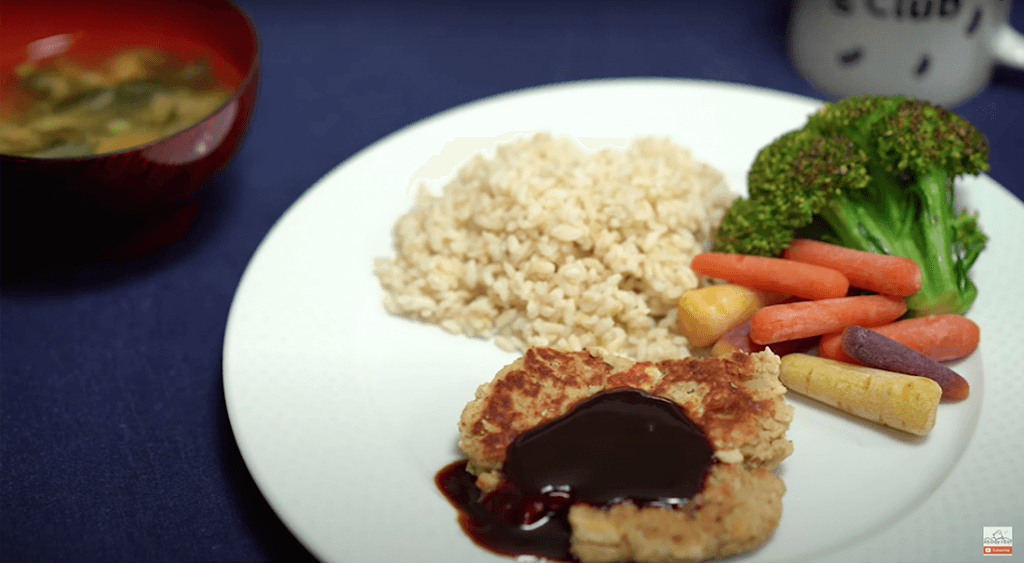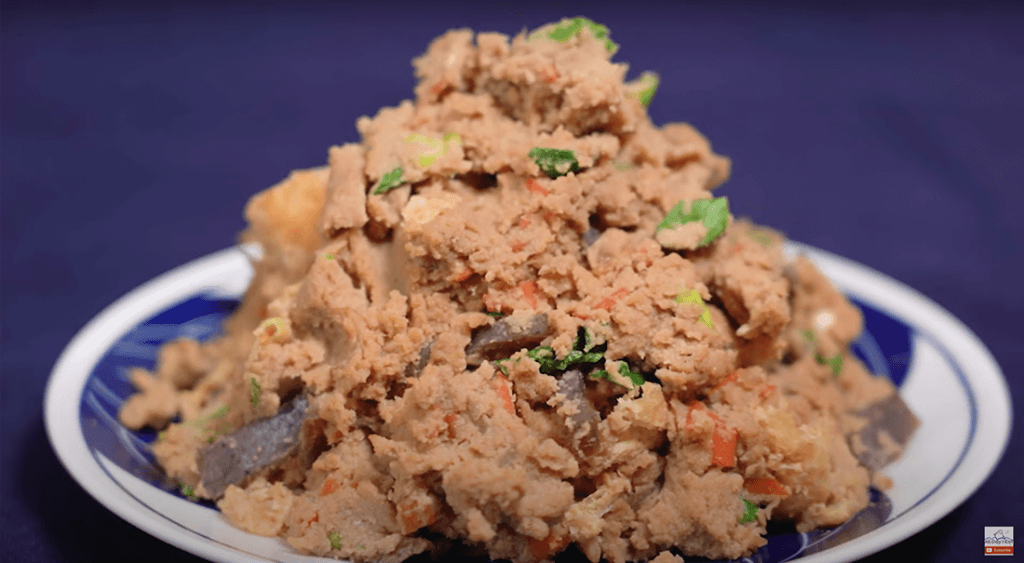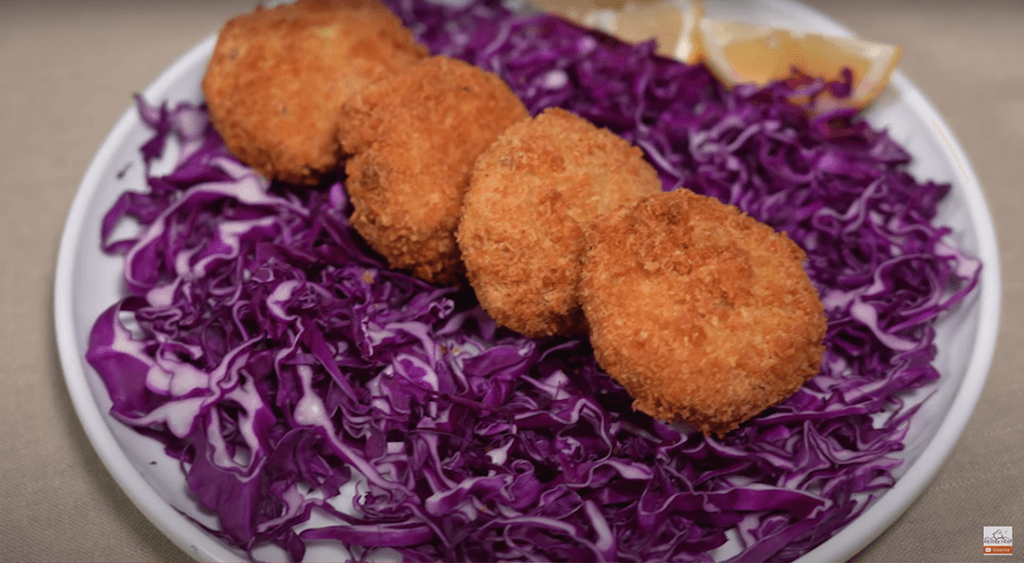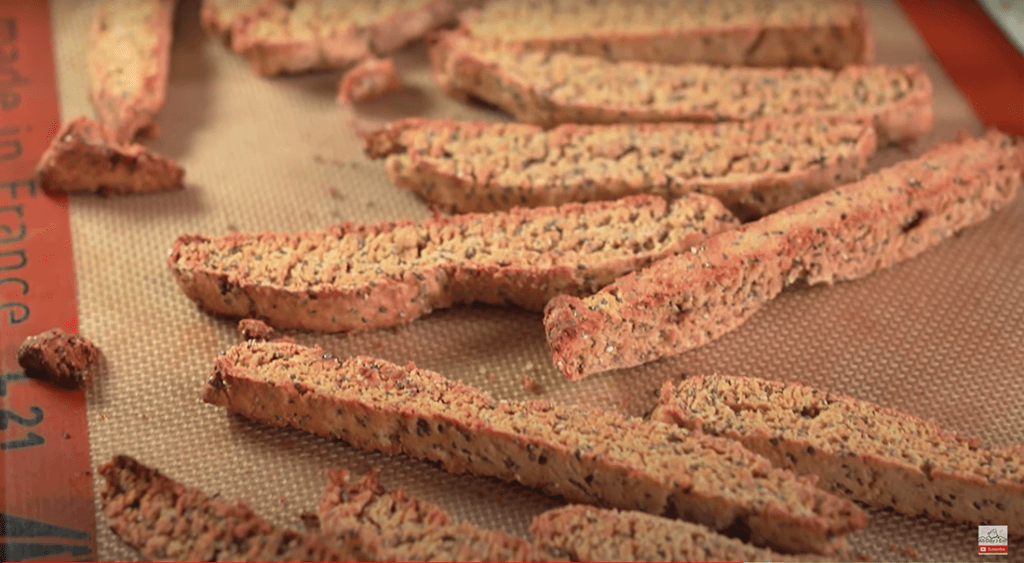In this blog, we are going to be talking about five different and delicious recipes that you can enjoy and repurpose your okara, which is the soybean pulp leftover from making homemade soy milk, and five different Japanese recipes that you’re going to definitely enjoy. Mottainai. Don’t be wasteful. So in Japanese, there’s this phrase called Mottainai. Mottainai means to be wasteful, and that’s exactly what we do not want to do.
What is okara?
As you may know, okara is what’s leftover from making soy milk. It’s that mushy soybean pulp that has plenty of nutrition in terms of both fiber and protein, some vitamins, and then some minerals, so it’s got a lot going for it, and you can reuse it in many different dishes. Let’s look at some of the best Okara recipes you can try.

The Five Must-try Okara Recipes
1. Hambagu
The first way that I was going to share with you is one of my favorite recipes and that is hambagu. Hambagu is the Japanese pronunciation of hamburger and you might think just from hearing that it calls for beef or pork or something else. But in this case, we are talking about okara hambagu.
Okara hambagu is a recipe actually made from a little bit of okara, a little bit of firm tofu, and maybe even some fresh shiitake mushrooms or dashigara shiitake, which is shiitake mushrooms that have been used to make dashi, and it’s very, very delicious. It’s one of my favorite dishes to use okara, and that’s one of the reasons why it’s first.
If you’re interested in making it, I’m actually gonna be sharing a video that shows you exactly how you can make okara hambagu with the ingredients that I just told you about. And you might be very, very surprised to find that it’s quite delicious, even more so than regular hambagu, especially if you’re not craving meat.
And let me tell you about one time I was in Japan. When I was in Kyoto, there’s actually this place I think is still there today, it’s called Mumokuteki Cafe, and it’s actually a cafe and they specialize in Vegetarian Japanese food. And I think this is one of the first times that I had okara hambagu, and it was amazing. Amazing. The entire meal was vegetarian, of course, but the okara hambagu was life-changing.
This is probably the closest recipe that I have been able to recreate in my own kitchen that was kind of like what I ate in Kyoto at that restaurant. I’d be curious to know what you think. And if you’ve ever had okara hambagu, what did you put in it? Because there’s a lot of different variations and recipes with which you can experiment and repurpose your okara.

2. Unohana
My second favorite recipe is unohana, which is actually a type of plant which the dish resembles. This is a flower in Japan and it kind of looks like– I don’t know how you’d say it, how to describe it. But basically, this dish got its name from that flower because it sort of resembles the appearance of the flower. And maybe if you saw them too, you tell me.
That’s one of my favorite recipes that is easy because it’s very nutritious. Usually, the ingredients include little bit of dashi, a little bit of shoyu or soy sauce, and some vegetables. And it’s very filling and very nutritious, and also very tasty. It’s one of the savory dishes that you can enjoy okara. So if you’ve ever tried that dish, you may know what I’m talking about. And if you haven’t yet, maybe this is something you can give a try.

3. Korokke
The third recipe with okara that I was going to share with you is called korokke or also croquette in English. And you may have had this before. It’s actually a fried thing like a morsel. It’s like a fried patty which has a panko as an ingredient on the outside and usually there’s something like okara, potato, kabocha is another filling, maybe even some minced meat. And it’s very, very savory and it’s kind of a comfort food. It’s not exactly the healthiest thing for you because it’s deep-fried. You can also bake it, but it doesn’t come anywhere near close to the actual deep-fried versions.
So that’s something that you might also want to give a try if you’re into trying things and if you enjoy a good fried dish or two every now and then. It’s not gonna hurt you and then you’ll know what I’m talking about. Korokke daisuki. I love korokke.

4. Potato sarada
The fourth easy dish that I was gonna share with you is also known as potato salad or potato sarada. And there’s a couple ways that you can make this. One is to do a replacement or substitution of the potatoes in a traditional potato salad or Japanese-style potato salad. So maybe for ingredients, you could do 25% okara and maybe 75% potatoes, or you could do 50/50, which is my favorite ratio. And your potato salad will taste quite similar to the potato salad that it would have been if you use 100% potatoes. Alternatively, you can do 100% okara and see how you enjoy that.
Because okara has already been extracted from a lot of its flavor components to make soy milk, it is very delicate in flavor and tends to take on seasoning pretty easily, which is why it can be used in so many different recipes. And potato salad or okara sarada is one way that you can also enjoy reusing your okara.

5. Baked goods
The fifth way that you might want to repurpose your okara is to use it in some sort of baked goods. There are many different easy recipes that you can repurpose your okara. You might have seen some of my videos on making okara cookies, as well as okara cake, okara muffins, okara biscotti, and some of these other recipes that you can simply put in a little bit of okara to add a little bit more nutritional value, a little bit more protein and fiber, and a little bit more moisture and density. That’s what the okara will do to your baked goods. Those are a few examples of baked goods that I personally enjoy and I make every now and then with my okara.




Konnichiwa! (Hello!) I'm Pat Tokuyama, a Japanese tofu cookbook author, who travels for music, food, and adventure. If you like Japanese tea, checkout some of the newestorganic japanese tea, matcha bowls and noren and more!
** Curious about the Plant Based Japanese Cooking Club? ** Learn more here!
How to preserve your okara?
You might be wondering if you have a bunch of okara, you’re not exactly sure or ready to use it just yet, how can you preserve it so that it doesn’t go bad. Well, there are actually two different ways that you can preserve your okara so that it maintains its freshness.
One is to freeze it. As soon as you’re done making your soy milk, put it into a freezer ziploc bag and freeze it. Try to use within a few weeks so it doesn’t get freezer-burned and it’ll be as good as new.
The second way is to microwave it and dehydrate it completely. So this takes a little bit more work, but the end result is going to be sort of like a panko, which is like a Japanese bread crumb. The texture is going to be very crumbly, very dry, and you can actually use it in a variety of baked goods or rehydrate it for something else.
So those are two ways that you can actually preserve your okara if you’re not ready to use it right away, both of which I have tried and are very effective in maintaining the freshness. So let me know what you guys think about that.
[embedyt] https://www.youtube.com/watch?v=KPrw1-ch0Bs[/embedyt]
If you have any other ideas or tips, suggestions for preserving your okara, or repurposing it for a Japanese dish or other non-Japanese recipes, I’d be curious to see what you guys have experienced and what you’ve experimented with. Let me know in the comments below and let me know if you’re going to be trying one of these five recipes, which one you’ll be trying first.
See you then.



Recipe for pulp and ocarra ( left overs from tofu.
Muffins, pancakes, cakes, hummus etc
Hi Pat where is link to eggplant video and recipe?